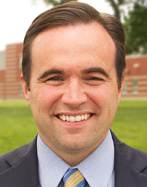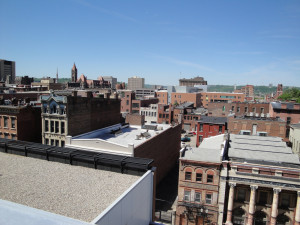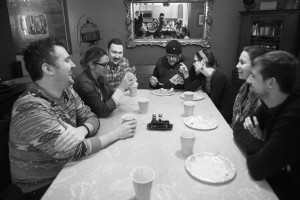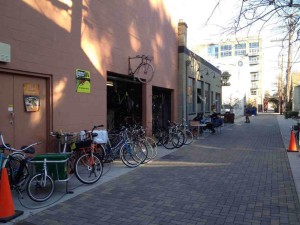My friend and occasional Urbanophile contributor Rod Stevens has suggested that communities should create "Dewar's Profiles" of the people in their cities that represent the type of entrepreneur they'd like to attract more of. I think this is a good idea. It's about thinking of the characteristics of people who have achieved success, and chosen to build that success in a particular place. What attributes do those people have? Once you know that, you can go out and find more of them. Some of this is place specific but I want to apply this … [Read more...]
The Rise of the Executive Headquarters
My latest post is online over at New Geography and is called "The Rise of the Executive Headquarters" in which I take another look at the emerging trend of putting the top executives of majors corporations back in global cities (often downtowns). Here's an excerpt: Headquarters were once a defining characteristic of urban economic power, and indeed today cities that can still brag of the number of entries they boast on the Fortune 500 list of largest American firms. Yet as urban centers increasingly lost headquarters, boosters started to … [Read more...]
The Urbanophile Interview: Cincinnati Mayor John Cranley
I was able to sit down this month with new Cincinnati Mayor John Cranley to spend an hour on such topics as Cincinnati's incredible historic assets, its history of social conservatism, streetcars and bike lanes, the repopulation of the urban core, and more. If the audio player below doesn't display, click over to listen on Soundcloud. Mayor John Cranely. Image via City of Cincinnati. Here are some edited highlights of our discussion. For those who prefer reading to listening, a complete transcript is available. By far the most … [Read more...]
On the Riverfront
Thursday I took a look at my "Cincinnati conundrum," namely how it's possible for a city that has the greatest collection of civic assets of any city its size in America to underperform demographically and economically. In that piece I called out the sprawl angle. But today I want to take a different look at it by panning back the lens to see Cincinnati as simply one example of the river city. There are four major cities laid out on an east-west corridor along the Ohio River: Pittsburgh, Cincinnati, Louisville, and St. Louis (which is not on … [Read more...]
The Urbanophile Interview: Louisville Mayor Greg Fischer
I recently sat down to talk for about half an hour with Louisville, Kentucky Mayor Greg Fischer. We had a wide ranging discussion that ventured from branding to globalization, regionalism, talent attraction, legacy, and more. If the audio player below doesn't display, click over to listen on Soundcloud. Mayor Greg Fischer. Image via Wikipedia. Here are some edited highlights of our discussion. For those who prefer reading to listening, a complete transcript is available. On an economic development partnership between Louisville and … [Read more...]
Sunday Night Dinner in Indianapolis
Sunday night dinner in Herron-Morton Place, Indianapolis. This is one of three dinner groups in that neighborhood. Photo by Amanda Reynolds (check out the mirror!)Urban culture varies radically from city to city. Yet to a great extent the culture of the usual suspects type of places tends to get portrayed as normative. In New York, for example, with its tiny apartments, the social life is often in public, in many cases literally on the streets of the city, which pulse with energy. As the ne plus ultra of cities, the street life of New York is … [Read more...]
The Decline of Work
Tocqueville's Democracy in America has a chapter entitled "Why Among the Americans All Honest Occupations Are Considered Honorable." In it he noted that because America lacked an aristocratic tradition of leisure, labor had not been stigmatized as something inherently degrading to man: In America no one is degraded because he works, for everyone about him works also; nor is anyone humiliated by the notion of receiving pay, for the President of the United States also works for pay. He is paid for commanding, other men for obeying orders. In the … [Read more...]
In-State vs. Out-of-State Migration
My recent repost of an article on Columbus, Ohio's brand blew away the all time comment record for this blog, with 271 as of this writing. One the discussions was around the extent to which Columbus and other Ohio cities draw mostly from the state or from a broader area. Obviously with Ohio State University, Columbus has a massive in-state draw. But what about people from out of state? To try quantify this, I used the IRS migration data in my Telestrian system to sort out net migration into that which is with the state of Ohio, and that … [Read more...]
Blind Alleys of Urban Branding
Liestal Alley in SacramentoIt's the early morning of January 20th and I'm being driven around Sacramento by a friend of mine in hopes of finding my stop for the day, a popular coffeehouse in Midtown called Old Soul Coffee. Having navigated a series of one-way streets for nearly 30 minutes, it became apparent that this place was more than a bit tricky to find. We stopped on a side street to reorient ourselves, and discovered a clue that provided the insight our struggle needed: the coffeehouse is actually located in an alleyway adjoining the … [Read more...]
Rebranding Columbus
This post originally ran on August 15, 2010. Some anachronisms have been left in the piece, so keep the original date in mine. It's no secret I'm a fan of Columbus, Ohio, one of those under the radar cities that's a whole lot better than its external brand image would suggest. That frustrates local civic leaders, who've undertaken a major re-branding effort, as discussed in a recent NYT piece, "There May Be ‘No Better Place,’ but There Is a Better Slogan:" Quick, what do you think about when you hear the words “Columbus, Ohio”? Still … [Read more...]
- « Previous Page
- 1
- …
- 15
- 16
- 17
- 18
- 19
- …
- 36
- Next Page »




